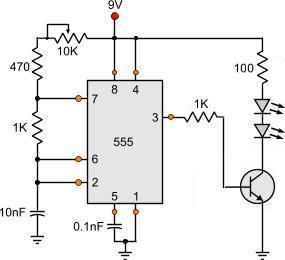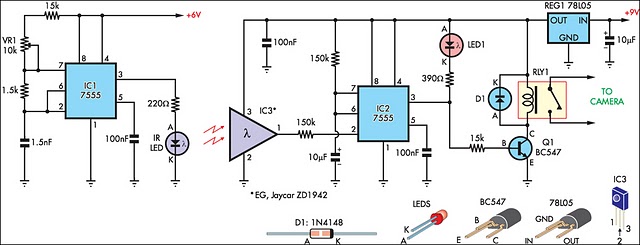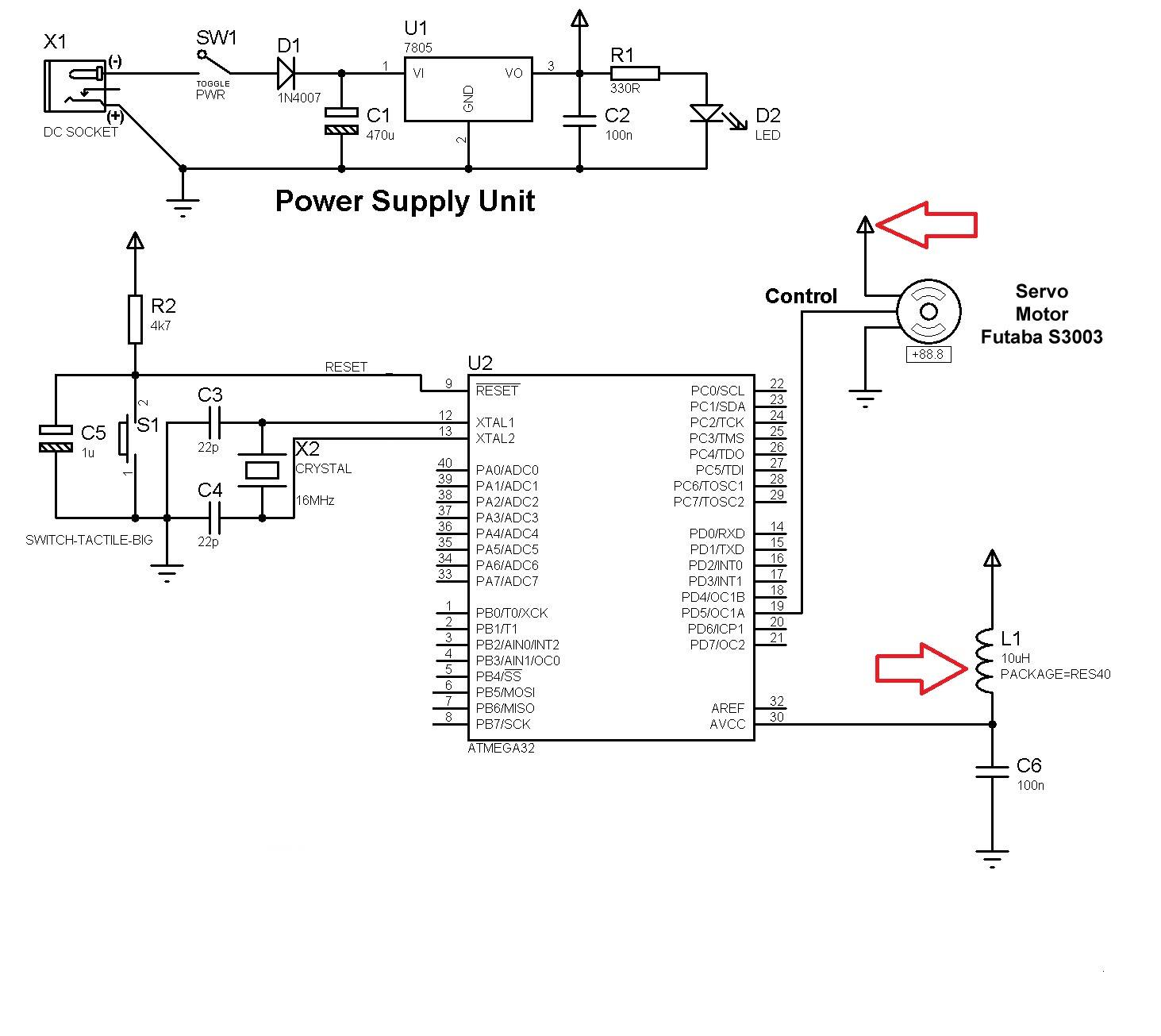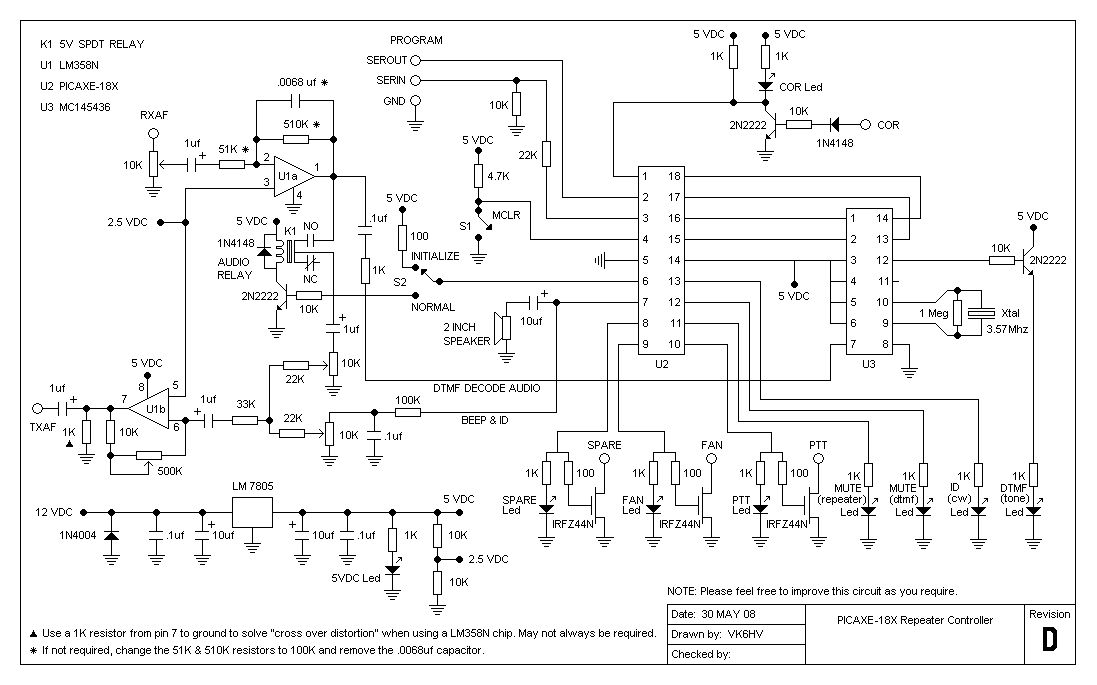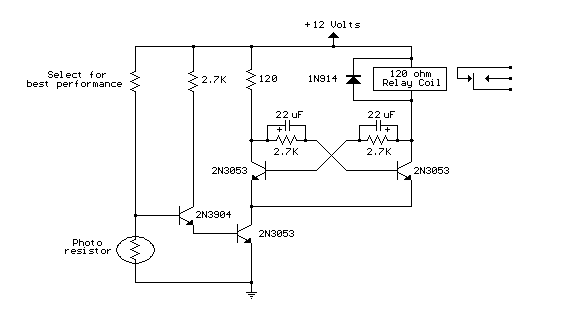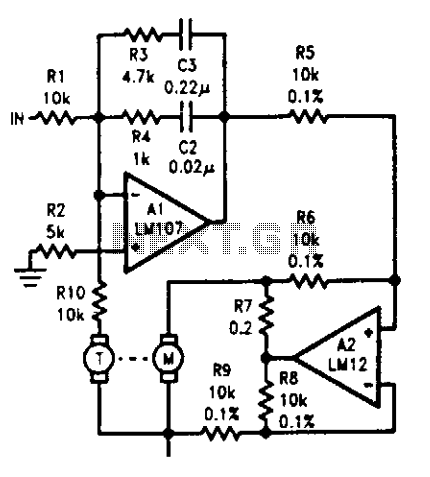
Tachometerless Motor Speed Control
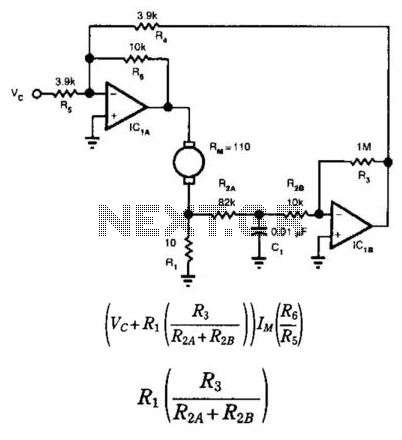
This circuit provides bidirectional speed regulation for small motors and does not require a tachometer. The voltage applied to the motor's windings, which is determined by summing amplifier IC1A, is expressed as a function of the command voltage (Vc) and the motor current (IM). By setting the motor's winding resistance and brush resistance (RM) accordingly, the command voltage becomes proportional to the motor winding's counter electromotive force (emf). Capacitor CI offers compensation. The value of resistor R1 should be set to 5 to 10% of RM's value, which can typically be found in the motor's specification sheet.
This circuit is designed for effective speed control of small motors in applications where precise regulation is essential. The use of a summing amplifier (IC1A) allows for the integration of multiple input signals, thereby facilitating the desired control over the motor's operation. The command voltage (Vc) is the primary input that dictates the motor's speed, while the motor current (IM) provides feedback necessary for maintaining stability and performance.
The relationship between the command voltage and the motor's counter emf is crucial, as it ensures that the motor operates efficiently within its specified limits. By configuring the motor's winding resistance and brush resistance (RM), the circuit achieves a balance that allows the command voltage to effectively counteract the back emf generated during motor operation. This balance is essential for achieving the desired speed regulation without the need for additional sensing devices such as tachometers.
Capacitor CI plays a vital role in compensating for any variations in the motor's performance, which may arise due to changes in load or supply voltage. This compensation is necessary to maintain consistent operational characteristics and prevent oscillations that could lead to instability in motor speed.
Furthermore, the selection of resistor R1 is critical, as its value should be set to 5 to 10% of RM's value. This ratio ensures that the feedback loop remains responsive while providing adequate damping to avoid excessive overshoot or oscillation in the motor's speed. The RM value can typically be referenced from the motor's specification sheet, allowing for accurate and reliable circuit design.
Overall, this circuit design is well-suited for applications requiring precise control of small motors, providing a straightforward solution that eliminates the need for complex feedback systems while maintaining efficiency and performance. This provides bidirectional speed regulation for small motors and requires no tachometer. The voltage th at summing amplifier IC1A applies to the motor"s windings equals: where Vc is the command voltage and IM is the motor current. If you set the motor"s winding resistance and brush resistance (RM) equal to: the command voltage will be proportional to the motor winding"s counter emf.
CI provides compensation. Set Rl"s value so that it equals 5 to 10% of RM"s value. You can generally find RM"s value in a motor"s spec sheet. 🔗 External reference
This circuit is designed for effective speed control of small motors in applications where precise regulation is essential. The use of a summing amplifier (IC1A) allows for the integration of multiple input signals, thereby facilitating the desired control over the motor's operation. The command voltage (Vc) is the primary input that dictates the motor's speed, while the motor current (IM) provides feedback necessary for maintaining stability and performance.
The relationship between the command voltage and the motor's counter emf is crucial, as it ensures that the motor operates efficiently within its specified limits. By configuring the motor's winding resistance and brush resistance (RM), the circuit achieves a balance that allows the command voltage to effectively counteract the back emf generated during motor operation. This balance is essential for achieving the desired speed regulation without the need for additional sensing devices such as tachometers.
Capacitor CI plays a vital role in compensating for any variations in the motor's performance, which may arise due to changes in load or supply voltage. This compensation is necessary to maintain consistent operational characteristics and prevent oscillations that could lead to instability in motor speed.
Furthermore, the selection of resistor R1 is critical, as its value should be set to 5 to 10% of RM's value. This ratio ensures that the feedback loop remains responsive while providing adequate damping to avoid excessive overshoot or oscillation in the motor's speed. The RM value can typically be referenced from the motor's specification sheet, allowing for accurate and reliable circuit design.
Overall, this circuit design is well-suited for applications requiring precise control of small motors, providing a straightforward solution that eliminates the need for complex feedback systems while maintaining efficiency and performance. This provides bidirectional speed regulation for small motors and requires no tachometer. The voltage th at summing amplifier IC1A applies to the motor"s windings equals: where Vc is the command voltage and IM is the motor current. If you set the motor"s winding resistance and brush resistance (RM) equal to: the command voltage will be proportional to the motor winding"s counter emf.
CI provides compensation. Set Rl"s value so that it equals 5 to 10% of RM"s value. You can generally find RM"s value in a motor"s spec sheet. 🔗 External reference
Warning: include(partials/cookie-banner.php): Failed to open stream: Permission denied in /var/www/html/nextgr/view-circuit.php on line 713
Warning: include(): Failed opening 'partials/cookie-banner.php' for inclusion (include_path='.:/usr/share/php') in /var/www/html/nextgr/view-circuit.php on line 713
